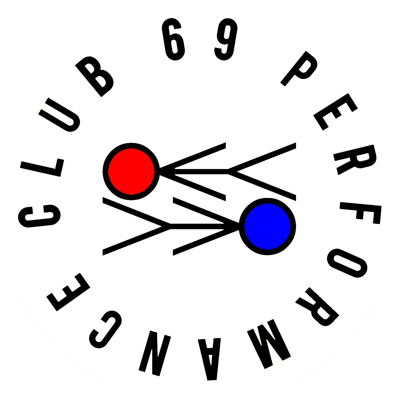This article is an essay that was read by Otty Widasari in a panel discussion entitled “Media Performance” on the PERFORM program, the annual program of the Ilmin Museum of Art, Seoul, South Korea, which exhibited the performance arts and organized discussion forums on that field.
I AM AN ARTIST who grew up as a teenager in the 90s. At that time, I did not have much contact with the art world. I was an ordinary student who studied journalism, even though my desire to become an artist was very strong. But my understanding of art was minimum. Like most parents in Indonesia, mine did not allow me to study visual arts, due to the insufficient infrastructure of art in Indonesia at that time. To common people, to become an artist was like to run a non-professional job.
I just started to learn everything from the beginning when I was 26 years old when I had worked in the film industry. Since I felt the industrial system was not my core, I began to attend many art events and take part in various discussions in that area routinely.
In 2003, along with several friends, I founded a collective in the form of a study group, namely Forum Lenteng, to learn about film, video, art and media. The main mission of founding Forum Lenteng was in the criticism area, responding to the lack of knowledge situation as an impact of centralized information and reference in the era of dictatorship which ended in 1998. So, until now we have been moving towards the alternative education path to fill the empty spaces that are not fulfilled by art education institutions in Indonesia. As a study group, we try to trace the history, the dissemination and the development of the art world and its relation to the culture and media, intensively one by one, by accommodating aspirations and interests of each member.
In its 15-year journey, Forum Lenteng has developed with several platforms that were formed organically in accordance with the development of studies carried out in it, also in accordance with the interests of its members which have been continuing to evolve until now. The age range of the members of Forum Lenteng is from 47 years old to 18 years old. So, in our daily lives, Forum Lenteng’s workspace is always filled with young people from year to year.
Started from there, I learned that in every era in any locations, the role of the younger generation is the first milestone of a culture, because they are the agent who understands today’s situation the most.
I highlight about young generation here because it is related to my subject discussion on how in 2016 Forum Lenteng started a platform named 69 Performance Club, which focused on the study and practice of performance art in Indonesia.
69 Performance Club was founded on the initiative of several members of Forum Lenteng who were interested in the art form that had unique characteristics, seen from its chronological journey since the 1970s in Indonesia.
Unfortunately, in the learning process that we did, we found a little difficulty in finding thorough archives in the form of critical writings on performance art in Indonesia. Maybe that was due to the strong verbal tradition in Indonesia. This triggered 69 Performance Club to strengthen this platform as an intensive learning space, by learning, recording, documenting, and archiving about “today” while looking back at history.
Every time I try to look back, I always find out how the role of the younger generation is very significant in making changes, especially in arts.

Otty Widasari and Prashasti W. Putri gave a presentation at the “Media Performance” Discussion Panel on PERFORM, Ilmin Museum of Art, Seoul, South Korea.
Chronicle
IN ITS HISTORICAL chronology, performance art in Indonesia was present in the art scene as well as amongst the society in an effort to complete its tasks. Until the 1970’s the learning system in fine arts colleges in Indonesia had been very strict with the classical education-based curriculum.
During the dictatorship rule under the leadership of Suharto, known as the New Order (1967-1998), the principle of ‘art for art’ was a space to infiltrate the practice of de-politicization, where artists should not talk politics to maintain security stability without criticism towards the militaristic government, considering that art is the most liberal medium to carry the message of protest.
Performance art was present in that era on the initiative of students from fine arts colleges in Jakarta, Bandung and Yogyakarta, as a resistance to the rigidity of the learning system which limited the experimentation of art, since the medium of art was only limited to painting, sculpture and prints. In addition, the resistance of art students at that time was also towards the agenda of de-politicization in the curriculum of art learning on campuses. So then the discourse of art expression that began to lead to the form of “action” that was exhibited publicly arose, with a strong content of protest. This form of artworks increasingly led to the demonstration of execution and the realization of art that aimed more at emphasizing ideas than the final artwork, in the forms of installation, happening, and conceptual works. The body was often used as a medium in the artworks. These all adopted the knowledge of western modernity which was rooted from Dadaism to Fluxus.
But unfortunately, the archives or studies about these shifts of the art forms are not easily traced because of the tradition of recording, archiving and documenting that were received randomly in Indonesia through colonialism which brought the method of modern learning. Thus, performance art as knowledge in the realm of art becomes minimum. Now I can only read it as part of the symptoms of contemporary art.
Those performative art forms culminated in massive mass demonstrations to overthrow the regime of the New Order dictatorship. Performance art that was identical with social-political concern and always carried the idea of protest against the depravity of the state’s power system (in addition to other issues such as environmental damage, gender, consumerism, capitalism and other issues), and having the power to approach the public and involve them, got the real stage at the 1998 Reformasi in Indonesia. Artists went to the streets, held their performance works, along with people protesting in various big cities, especially Jakarta, Bandung and Yogyakarta. Performance art mixed with the propaganda of political statements and demonstration property.
At this point, performance art in Indonesia experienced its confusion of status between: as a statement of individual artists, as the heritage of modern art, or a form of demonstration which was a social or collective expression.
Again, I find it difficult to find a comprehensive recording that reviews the aesthetic aspects of the shifting of the meaning of modern art that is applied in Indonesia. What clearly more striking is the aspect of the response towards it and its impact on the public as part of the trigger for social change, compared to its aesthetic aspects.
Up to this point, we can see that performance art in Indonesia has taken on the task of the avant-garde to restore the essence of art into life.
Entering the late 1990s, the works of performance art in Indonesia seemed to be undergoing a shift, even though they were still heavily carrying out political themes, in a more exclusive direction. Performance artists were often involved in regional and international events. On the one hand, this was a positive impact in the progress of the Indonesian performance art scene, where the works of struggling artists since the 1970s had confirmed their existence and gained recognition in a wider scope. But on the other hand, it became ironic because the nature of performance art, that rejected the commercialization by galleries which were initially the object of their resistance, had become a part of the dominance of the system imposed by art infrastructure which accommodated all forms of art as commodities and spectacles. Performance art had become as exclusive as paintings and sculptures that were once regarded as the limitations of the medium in expression.

Otty Widasari and Prashasti W. Putri gave a presentation at the “Media Performance” Discussion Panel on PERFORM, Ilmin Museum of Art, Seoul, South Korea.
MTV Generation
MEANWHILE, BACK TO the issue of the young generation in the late 1990s, the younger generation of that era interpreted performative action as something close to their daily lifestyles. Along with the euphoria of freedom in the era of television reform and culture which was very closely related to society, MTV was a model considered to represent the language of the youngsters the most. In addition, the phenomenon of pirated software also triggered the excitement of exploring technology that was closely related to visual culture. So the expression of young people was widely applied in performativity combining popular culture with other multimedia technologies such as synthesizers, computers and also video and internet. This expression was performed in the clubbing scene. The frameworks of art event were no longer sacred and can be said to avoid political themes. Party on every occasion, mingling with art events.
This situation blurred the boundaries of performance art with popular lifestyles even further among young people who began their footsteps as artists.
In the early decade of the 2000s, many collectives emerged which put forward the initiative of the artist (collective as artist’s initiative), as a form of resistance against the resurrection of artists in the domination of the market and established art infrastructure. The situation in this period, I think, instead of rejecting the gallery head to head, it provided an alternative space for contemporary artistic expression.
But in each era, the same activism is always carried out by active young artists in Indonesia, rejecting all forms of art definition that are limited and tend to lead to exclusivity.
Through a journey of approximately half a century, performance art in Indonesia, due to its proximity to life activities in a broad sense, performance artists always have the opportunity to question, avoid and reject, the narrow conventions that make the understanding of art more binding and distant.
In the mid-2000s the situation of performativity in the arts increasingly merged with the barriers of other arts and even with other disciplines, thus influencing the diversity of ideas and presentation forms of performance art.
It all came down to the “all free” situation. Anyone can be an artist. Ended in fluidity, and the effort that was pushed still did not produce a comprehensive study of the learning process itself. It was a situation that sufficiently led to a crisis of superficial knowledge. But I can interpret this shift of performativity that was carried out by the action of the young generation’s lifestyle as its own contemporaneity task.

Performative Generation Effort
AS AN ORGANIZATION that has nature as a study group, for Forum Lenteng this fluidity is a situation that must be responded to in the action of criticism, one of which is by creating a performance art platform.
69 Performance Club is an initiative of young members of Forum Lenteng who were born as a generation that no longer cared about the market. This generation, the millennials, opened their eyes when they were first born into the world with a coloured situation, where all the colours were in one hand of something called “remote control”. So this control button which then developed itself as a space of tradition is a cultural container survived by the circulation of millennials later on.
While the tradition of authorship from the modern era is still setting foot quite solidly until now, the millennium generation that is all-connected and self-legitimate through followers and likes, whether aware or not, is still fascinated by the tradition of authorship. It can be seen from how big the interest in being a performance artist among the younger generation today. Meanwhile, references about performance art that they obtain through various legitimate events in Indonesia are still very much carrying out the spirit of the avant-garde, no matter how fluid the forms are with all the digital devices and the internet connection.
On the other hand, there is friction, which can give an idea of the apolitical character of the “Y” generation. The generation that is used to receive affection through emoticons/emojis, #hashtag, pray for “something”, or flattered by “thumbs up”. The millennials’ characters are mostly: having a performative tradition with a strong performing culture; expressing socially in the mediated way; becoming a star because of the large number of followers who give their “likes” to their appearance. That is, all must be connected through the media.
Meanwhile, performance art in Indonesia still requires a long learning process about the relation of happening presence and the public who interacts spatially and directly. Whereas, the realm outside of simulative media has a quite different level of knowledge, which has been established in advance since the birth of modernity. So this generation is trapped under the curse of the contemporary myth that revolves around the charm of period and romanticism of “contemporary” spirit, which requires the generation to become fully users and live in accordance with the development of the technology itself. Though we all certainly remember that technology is the golden child of capitalism.
The existence that is built on the basis of how the assessment of other subjects in the realm of the online network, such as the likers and commentators, is clashed with real situations that clearly characterize their locality. While the unconnected-World character is being framed, it will be a one-way direction spectacle. A work of performance art was born to be showcased in a one-way direction mentality. It will only be present in the virtual world to transform into a simulation product. It must abandon its old sacred qualities, even it can be watched on a smartphone screen.
The Supper (2018) by Otty Widasari, was presented at the Ilmin Museum of Art, Seoul, South Korea, for the PERFORM program.
Good Code (2018) by Prashasti W. Putri, was presented at the Ilmin Museum of Art, Seoul, South Korea, for the PERFORM program.
The Three Percuss (2018) by Pingkan Polla, was presented at the Ilmin Museum of Art, Seoul, South Korea, for the PERFORM program.
So, how can a performance art work become so relevant and attracting interest for the young generation, if it is argued that the millennials do not believe in the distribution of information in one direction anymore; they believe more in user-generated content (UGC) or content and information made by individuals, and peer-to-peer dialogue?
The reading of these matters requires an understanding that the audience of performance art is also a mediated part of the world. Everyone is connected and everyone in the internet era is an audience that consumes content while producing content.
Then, where is the position of performance art in this millennium era?
Maybe it is in a situation of searching for meaning in vain by humans, in facing a world that cannot be understood.
Using analogy from Greek mythology, when Sisyphus had to carry out his curse by rolling a rock onto a hill and then rolling it back down, Albert Camus saw it not as futility, but a struggle, because according to him the struggle was enough to fill the human’s heart. Then we must imagine Sisyphus rejoicing, not cursed. Maybe we should be happily celebrating technology and applications today, rather than being heavy users who are utilized by the realm of capital.
Let’s imagine the absurdity of pushing a rock up the mountain to be rolled back down like a two-way trip of absurd media work too, which drives millennials to keep rolling as users regardless of what they are doing. What is needed is rebellion, because there are a number of approaches to life that are absurd. Perhaps, that approach, to any absurd lives, which then becomes a tradition, is the one that can disturb or provoke the habit.
Maybe we should look with the perspective that, according to its nature, human beings continue to look for meaning in life, and that struggle is framed in works that try to see the relations of an absurd world with other absurd approaches. Because absurdity is a clear reason to remind us of boundaries. Since humans live in contact with things that don’t make sense, of course, they feel a longing for happiness caused by reason. Creative actions, if continue to be activated into culture will cut down ignorance. This is why a creation or artwork which is based on knowledge is a wonderful gift for the future. Maybe the performance artists today can discuss this through their works.
So the 69 Performance Club platform was initiated to read those matters, while at the same time carrying out learning practices and balancing by producing works by the artists involved. The main mission in this process is to provide an alternative to the current art system (especially in Indonesia), to re-question the commodification of art, and to be critical of internet culture and social media now. In addition, social media acts as a method for developing this platform itself. Public response is one of the methods of survival that is carried out in this regard, in addition to the mutual integration between other platforms at Forum Lenteng, to reach a wider public. *








